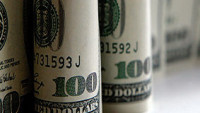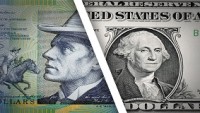 Last Friday’s US non-farm payrolls report was above average, but nothing special.
Last Friday’s US non-farm payrolls report was above average, but nothing special.
228,000 jobs were added in November, but the October report was revised lower by 17,000. The more predictable unemployment rate held steady at 4.1%. Average earnings rose by 0.2% and 2.5% on a month-on-month and year-on-year basis respectively, but both missed expectations. Wage growth is always welcomed, but the fact it undershot expectations prevented the report from being impressive.
The US economy is ticking along nicely and the report underlines the Fed’s policy of monetary tightening.
Even though it wasn’t a top notch jobs report, the Dow and the S&P 500 managed to close at record levels on Friday. The US indices had a stellar performance this year, and it appears the bullish sentiment is here to stay.
The week ahead as a flurry of central bank updates. The Federal Reserve are tipped to hike interest rates by 0.25% to 1.5% on Wednesday. The markets have been pricing in this rate for some time now. The press conference that follows could provide us with limited clues to what the Fed will do in 2018, because the mark-up of the US central bank will be very different. For now, traders are talking about three, or perhaps four interest rate hikes in 2018.
On Thursday, we will hear from the Swiss National Bank (SNB), the Bank of England (BoE), and the European Central Bank (ECB). The BoE announcement is likely to be uneventful following last month’s very dovish hike. No change is expected at the ECB either.
The latest CPI data from the eurozone showed a tick higher to 1.5%, from 1.4% but traders were expecting a reading of 1.6%. Mario Draghi, the President of the ECB has regularly expressed concerns about the sluggish inflation rate, and this could keep Mr Draghi on the dovish side.
The breakthrough in the Brexit talks on Friday morning gave sterling a boost, but buying momentum ran out of steam, and the pound finished firmly in the red by the end of the session. The next phase of the talks that are about trade won’t start until February at the earliest. The British government will be pushing for a free trade deal, but the EU are likely to keep their firm stance to see what they can get out of Prime Minister May.
EUR/USD – is still in its upward trend from early November, and if its holds above the 50-day moving average at 1.1756, it could retest the November high of 1.1961. Beyond that mark, traders will look to 1.2000. A break below 1.1756 could see it fall back to 1.1670.
GBP/USD – is still in its upward trend and while it is above the 100-day moving average at 1.3187 the outlook may remain bullish. Rallies could encounter resistance at 1.3548 or 1.3659. A move below 1.3180 may send the market to 1.3000.
EUR/GBP – has been edging lower since mid-November and it has broken below the 200-day moving average at 0.8800. If the negative move continues it could target 0.8600. A push higher might retest the 200-day moving average at 0.8800.
USD/JPY – has pushed above the 50-day moving average at 112.87 and if the positive run continues it could target 114.00, or 114.73. Pullbacks may find support at 112.87 or at 112.00.













